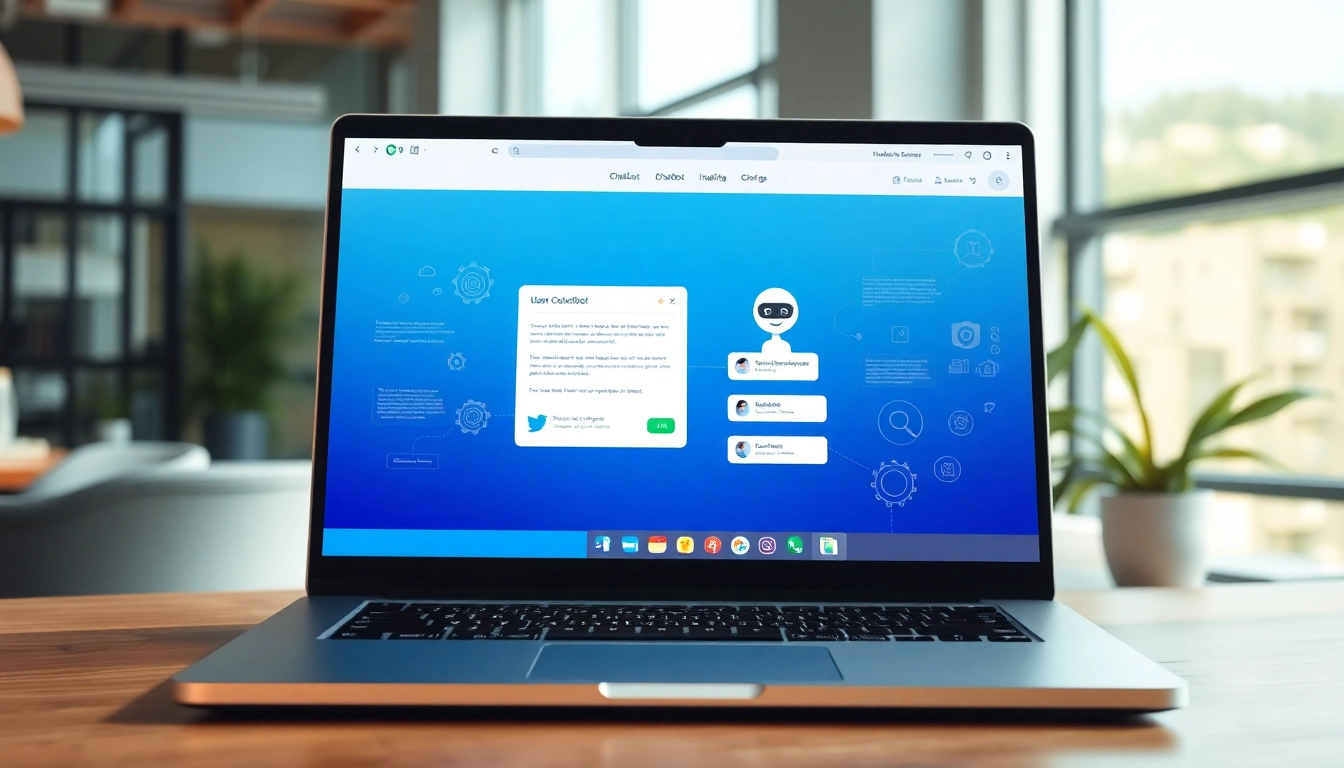Understanding the Importance of a Website Chatbot
In the digital age, where customer expectations are higher than ever, businesses are turning to innovative solutions to enhance engagement and communication with their audiences. One such solution is the website chatbot. This automated tool can significantly improve customer experiences, leading to better satisfaction and increased sales. In this article, we will delve into what a website chatbot is, explore its benefits, and address the challenges businesses often face when implementing these technological advancements.
What is a Website Chatbot?
A website chatbot is a software application that uses artificial intelligence (AI) to conduct conversations with users. These bots can engage visitors in real-time, offering answers to queries, delivering product recommendations, and guiding users through processes on a website. Chatbots can operate through various mediums, including text-based messaging, voice interactions, and even visual interfaces, adapting their communication style to the user’s preferences.
Benefits of Implementing a Chatbot on Your Website
- 24/7 Availability: Unlike human customer service agents, chatbots are available around the clock, ensuring that inquiries are addressed immediately, regardless of the hour.
- Cost Efficiency: By automating responses to frequently asked questions, companies can significantly reduce the cost of customer service while also redirecting human agents to more complex tasks.
- Enhanced Customer Engagement: Chatbots can provide personalized experiences by remembering user preferences and offering tailored recommendations, which can engage customers more effectively.
- Consistency: Chatbots maintain a consistent response style and accuracy level, ensuring that customers receive reliable information every time.
- Data Collection: Chatbots can gather valuable data on customer interactions, preferences, and pain points, which can be instrumental for marketers looking to enhance their strategies.
Common Challenges and Solutions
While the advantages of chatbots are compelling, organizations can encounter several obstacles when integrating this technology. Common issues include:
- Lack of Understanding: Many businesses underestimate the complexity of chatbot design and deployment. It is crucial to invest time in understanding user needs and chatbot capabilities.
- Integration Issues: Chatbots must work seamlessly with existing tools and customer relationship management (CRM) systems. Ensuring proper integration can require meticulous planning and testing.
- User Experience: If not designed intuitively, users may become frustrated and abandon interactions. Engaging design and thorough testing are vital for an optimum user experience.
Key Features to Look for in a Website Chatbot
Natural Language Processing Capabilities
One of the most critical features of an effective website chatbot is its ability to understand and process natural language. Natural Language Processing (NLP) enables chatbots to comprehend user inputs in a conversational manner, allowing for more fluid and natural interactions. This capability not only assists in accurately interpreting questions but also fosters a more human-like dialogue.
Integration with Other Tools and Platforms
A successful chatbot should be able to integrate with various tools, such as CRMs, marketing automation systems, and communication platforms. This integration allows for a seamless flow of information across business functions, enhancing the overall efficiency and effectiveness of customer interactions. For example, if a chatbot can access customer data from a CRM, it can offer personalized support based on the customer’s history and preferences.
User-friendly Interface Design
An intuitive interface is vital for ensuring users can easily interact with the chatbot. The design should be clean, visually appealing, and straightforward, featuring easy-to-navigate buttons and prompts. Moreover, guiding users through the interaction with clear instructions can significantly enhance their experience, making them more likely to return.
Best Practices for Deploying a Website Chatbot
Setting Clear Objectives for Chatbot Usage
Before launching a chatbot, businesses should define what they want to achieve. Whether it’s lead generation, customer support, or improving user engagement, having clear objectives helps in designing a bot that meets specific goals. Establishing metrics for success is also essential, allowing organizations to evaluate their chatbot’s performance effectively.
Optimizing Responses for Enhanced User Experience
Chatbot responses should be carefully crafted to provide value to users quickly. This means using a friendly tone, eliminating jargon, and ensuring responses are concise yet comprehensive. Regular updates and audits of the response templates can keep the interactions relevant and useful as user expectations change and new products or services are introduced.
Regularly Updating Knowledge Base and FAQs
To maintain the efficiency and accuracy of a chatbot, it is crucial to continually update its knowledge base. As new questions arise or as services evolve, feeding this information into the chatbot will help maintain its relevance. Regularly reviewing interactions will also reveal common issues or questions that may not have adequate responses, providing insight for future updates.
Case Studies: Successful Implementations of Website Chatbots
Retail Sector: Boosting Sales with Personalized Interactions
In the retail industry, chatbots have been instrumental in delivering personalized customer experiences. For instance, an online clothing retailer implemented a chatbot that guided users through the shopping process based on their preferences. The bot used collected data to suggest outfits and accessories tailored to individual tastes, resulting in a 30% increase in sales conversions during the trial period.
Healthcare: Streamlining Patient Communication
The healthcare industry has also seen transformative impacts from chatbots. A healthcare provider integrated a chatbot to help patients schedule appointments, receive reminders, and access information about their treatments. This initiative reduced the administrative burden on staff, cut appointment scheduling time by over 40%, and improved overall patient satisfaction.
Education: Enhancing Student Support Services
In educational institutions, chatbots are aiding in providing round-the-clock help for students. A university chatbot was designed to answer common questions regarding enrollment, course offerings, and campus facilities. This implementation reduced the number of inquiries to human advisors by 50%, allowing staff to focus on providing more personalized guidance to students who need it most.
Measuring the Impact of Your Website Chatbot
Key Performance Indicators to Track
To gauge the effectiveness of a website chatbot, it’s essential to establish and monitor key performance indicators (KPIs). Metrics such as response time, resolution rate, engagement levels (e.g., number of users interacting), and customer satisfaction scores can provide valuable insights into the chatbot’s performance. Regular analysis of these metrics can identify trends and inform necessary adjustments to optimize functionality.
Analyzing User Feedback for Continuous Improvement
User feedback is invaluable for improving chatbot performance. Encouraging users to rate their interactions can provide direct insights into what is working and what needs enhancement. Simple surveys or feedback buttons can be integrated into the chatbot’s functionality to gather user opinions effectively and promptly.
Converting Engagement into Real Business Results
The ultimate goal of implementing a website chatbot is to convert user engagement into tangible business results. This includes not only higher sales but also improved brand loyalty and customer retention. By analyzing how interactions lead to product conversions or service sign-ups, businesses can refine their approach and ensure that their chatbot remains aligned with overall marketing and sales strategies.




